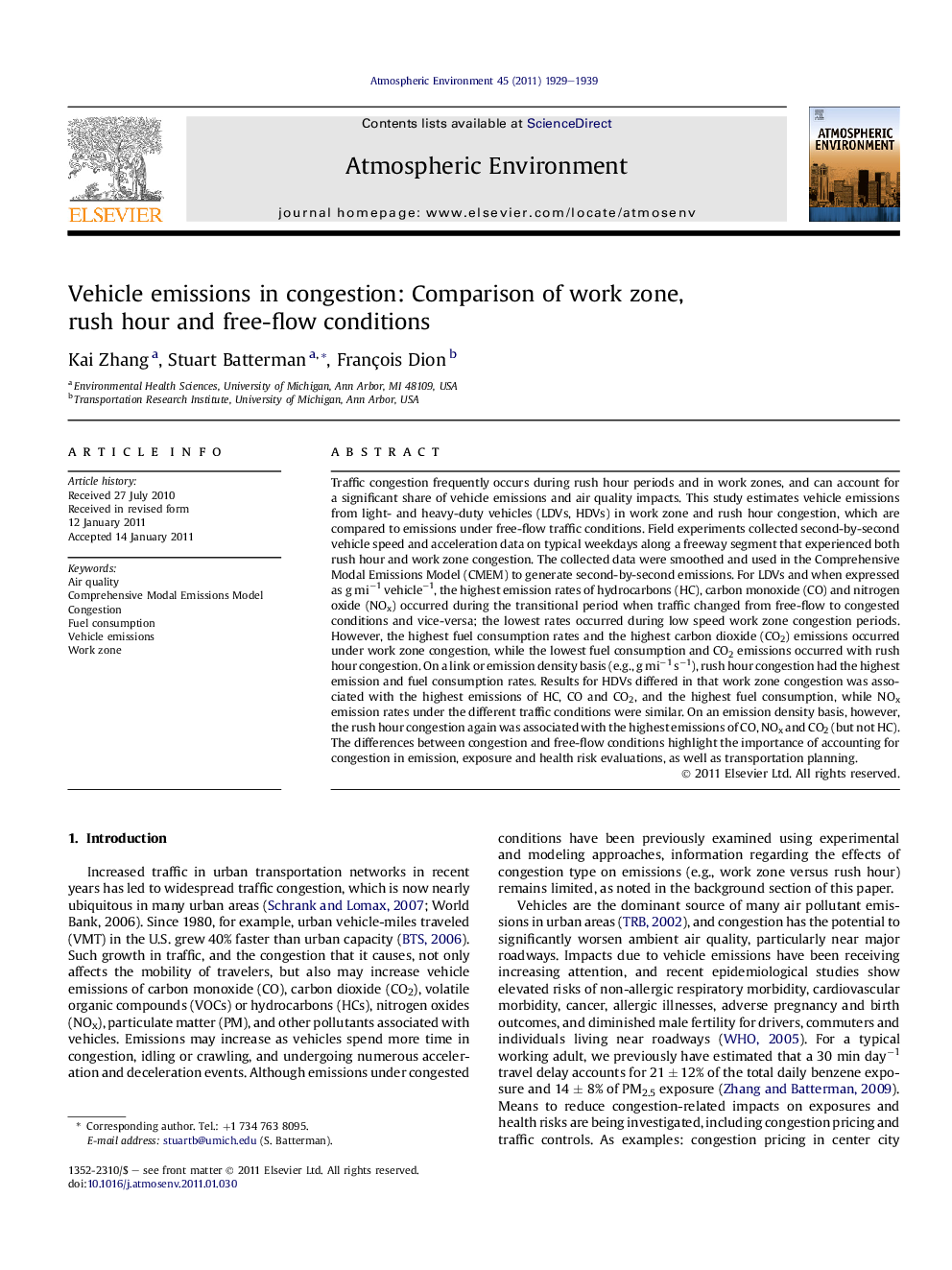| کد مقاله | کد نشریه | سال انتشار | مقاله انگلیسی | نسخه تمام متن |
|---|---|---|---|---|
| 4439935 | 1311039 | 2011 | 11 صفحه PDF | دانلود رایگان |

Traffic congestion frequently occurs during rush hour periods and in work zones, and can account for a significant share of vehicle emissions and air quality impacts. This study estimates vehicle emissions from light- and heavy-duty vehicles (LDVs, HDVs) in work zone and rush hour congestion, which are compared to emissions under free-flow traffic conditions. Field experiments collected second-by-second vehicle speed and acceleration data on typical weekdays along a freeway segment that experienced both rush hour and work zone congestion. The collected data were smoothed and used in the Comprehensive Modal Emissions Model (CMEM) to generate second-by-second emissions. For LDVs and when expressed as g mi−1 vehicle−1, the highest emission rates of hydrocarbons (HC), carbon monoxide (CO) and nitrogen oxide (NOx) occurred during the transitional period when traffic changed from free-flow to congested conditions and vice-versa; the lowest rates occurred during low speed work zone congestion periods. However, the highest fuel consumption rates and the highest carbon dioxide (CO2) emissions occurred under work zone congestion, while the lowest fuel consumption and CO2 emissions occurred with rush hour congestion. On a link or emission density basis (e.g., g mi−1 s−1), rush hour congestion had the highest emission and fuel consumption rates. Results for HDVs differed in that work zone congestion was associated with the highest emissions of HC, CO and CO2, and the highest fuel consumption, while NOx emission rates under the different traffic conditions were similar. On an emission density basis, however, the rush hour congestion again was associated with the highest emissions of CO, NOx and CO2 (but not HC). The differences between congestion and free-flow conditions highlight the importance of accounting for congestion in emission, exposure and health risk evaluations, as well as transportation planning.
► Emission rates depend on the type of congestion, e.g., work zone or rush hour.
► Microscopic models provide a way to estimate emissions in congestion.
► Congestion is generally associated with the highest emission intensity.
► Predictions of instantaneous emissions are sensitive to smoothing of speed data.
Journal: Atmospheric Environment - Volume 45, Issue 11, April 2011, Pages 1929–1939